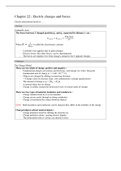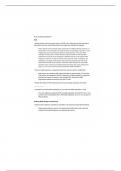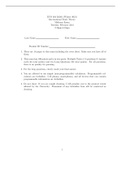Summary
Summary Electricity and Magnetism
- Course
- Institution
- Book
Full summary of "Fysica : Elektromagnetisme" which is a course seen in 2nd year bachelor of chemistry in Vrije Universiteit Brussel It is a resume that was made from the textbook Physics for Scientists and Engineers from Randall D. Knight
[Show more]









